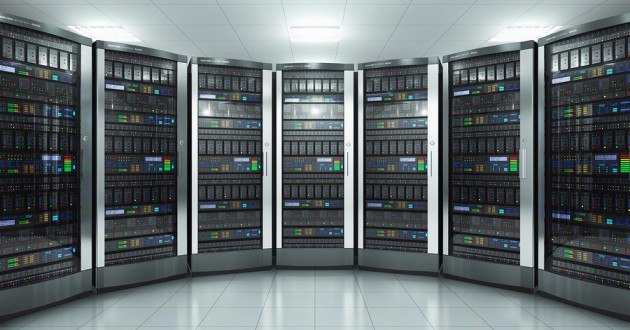What is Mainframe Computer:
A mainframe computer is a large computer with hundreds of processors. It can process a larger amount of smaller tasks quickly. A mainframe computer is smaller than a supercomputer. The supercomputer is the larger and fastest computer ever made.
Mainframe computers have the size of a refrigerator. Before 2000, these computers were big in size covering the whole room. But now these computers have decreased in size and improve in performance. It occupies very largely with an approximate area of 1000 sq. ft. it supports a large number of I/O terminals, more than 100 terminals.

Advantages of mainframe computer
High-end scalability: They are scalable in the sense that more hardware i.e. processors and memory can be added if needed. In a mainframe computer, more than 600 processors are directly managed by the operating system while many other processors are connected whose work is to move data within the mainframe computer.
Security: The security of these computers is very high. As these computers are used in banks so security is very important. In banks, these computers are used for managing online transactions, processing credit, and debit cards.
Long-lasting performance: These computers have a minimum time limit of 10 years. So they can perform well for 10 years and after that period companies can upgrade the mainframe computer or replace it.
Continuing compatibility: Mainframe computers have their own operating system e.g. IBM has its own operating system that can manage these computers. These computers are highly compatible with processors and other hardware and software.
Huge memory storage: Due to a high number of processors these computers have huge memory that can store and process large amounts of data at a time.
Virtualization: These systems have a logical partition which can help the mainframe to overcome memory limitation.
Can run multiple OS: In a mainframe computer, more than one operating system can be run at a time to boost the performance of the system.
Real-time monitoring and control: If any fault comes in the system then the administrator of the system is notified instantly. Suppose there is hardware failure then that hardware should be replaced to resume the work.
Disadvantages of mainframe computer
High cost: These computers have a very high price and they cannot be used in homes. Mainframes are only used by big organizations, banks, large websites, and government agencies.
Hardware/software is expensive: Windows and Mac are not run on mainframe computers. These computers have custom software and hardware that are expensive for the normal user.
A lot of space required: Mainframe computers need a large space and also the temperature of the place should not be hot.
High technical staff: For maintaining the mainframe computer specialized staff is needed. A normal computer user cannot operate and debug the system.
Command drove interface: The terminal connected to the mainframe computer has the text and a command-based interface that is difficult to understand.
Hardware crash: If any hardware crashed then the whole system stops working.
Examples of mainframe computer
- IBM Z-series
- BIM 1401
- System z10 servers
- HP mainframe
Mainframe Features
In this Mainframe tutorial, you will learn about features of Mainframe – Processing power, memory capacity, performance, computing, multiple operating systems, time-sharing, reliability, serviceability, availability, clustering technology and other features available in Mainframe.
A large number of CPU with Greatest Processing Power:
The mainframe has the greatest processing capacity and to support this there is a large number of CPUs with high processing power embedded within the frame.
Huge Memory Capacity:
As explained before the mainframe applications take its presence in large-scale operations and to support this facility the memory capacity embedded within the mainframe is very huge, in some cases, it could even be about more than 8 Gigabytes.
Increased Performance by Sharing workload:
Mainframes systems have the ability to share the workload among different processors and input and output devices. This makes its processing ability and power to be efficient and increases its performance.
Centralized Computing:
The mainframe system handles centralized computing by which all the operations take place in the processor section of the mainframe and the results are seen in the desktop monitor with the help of a utility or program running on the mainframe background.
Ability to Run in Multiple Operating System:
Mainframes have the ability to run multiple operating systems and by this feature, it is possible to function mainframe systems not as a single computer but as a number of virtual machines.
Supports Time-Sharing Ability:
By the feature of Time-Sharing Ability supported by mainframes, it is possible for thousands of users to operate and use the machine simultaneously with efficiency.
Supports Sophisticated Operating system:
The mainframe system supports sophisticated operating systems like UNIX, Linux, and VMS and IBM operating systems like Z/OS, Z/VM, and VSE/ESA.
Reliability:
The main important feature of the mainframe system was its Reliability which made its usage widespread among commercial customers. Mainframe systems are Reliable systems that give high performance, which is essential for reasonable operations against a database.
Availability:
As we have seen the mainframe system and application takes its presence in critical and complex business applications which require the system to be available at all times with 100% throughput. This is completely achievable and provided by the mainframe system and it’s really impossible to hear any system outage for any reasons in a mainframe system making its available for applications throughout. The above is achieved by the mainframe system by its great design where Memory chips, memory busses, I/O channels, and power supplies are provided with a pair more, ensuring the system availability throughout.
Serviceability:
It is possible to replace most of the components in the mainframe system with the system operating concurrently. Certain components like CPU if needed to be replaced of course requires the system operation to be shut down in which case this is done during the scheduled outage as per the user’s convenience.




